Our earthly flesh
Along it stumbles,
What does it ponder
In the daylight troubles?
The plight of the dodo,
The death of humility,
The Friday night line-up,
Or its own frailty?
To a WIS,
The answer is clear,
The movement, you say,
Is what we hold dear.
The bridges, the balance,
The fine, beveled edges,
The screws and the bluing
In our throats, breath catches.
To the Germans, there is
Something historically unique,
The three-quarter plate
Is what lies beneath.
Across all the pinions,
The wheels, the staffs,
It stands protecting dutifully
The extent of their craft.
Its surface is stroked
With a fine grinding tool
Its expanse is dotted
With rubies, so cool!
What of the remaining
Quarter of space,
What should be grand enough
To fill this place?
That honor is secured
By the belle of the ball
The double swan-neck balance,
Hand-engraving and all!
Its majesty framed
By the three-quarter plate,
The seconds, it spells
With its timely gait.
But lest I sound
Like that Seuss from those stories,
Let us get on with
This article, and hurry!
Phew, that was a lesson in persistence if there ever was one. But the effort is worth it for such an iconic, German feature. I know that there are many instances of the three-quarter plate’s use in watches from made outside of Germany, but it must be said that the three-quarter plate is distinctly “deutsch” in character.
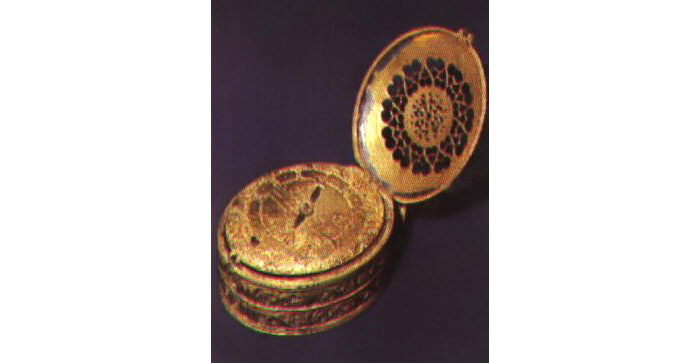
An antique clock-watch made in the 16th century by Peter Henlein of Nürnberg, Germany; this is believed to be the oldest clock-watch in existence (photo courtesy Peter R. Suter)
The Germans are, after all, generally credited with inventing the portable watch itself (please see Elizabeth’s How The Wall Came Tumbling Down: Made In Germany for a bit more information on this) and were at the forefront of the engineering world when it came to metalsmithing and precision equipment.
While I am no history expert, it is apparent that being the geographical center of Europe and having a large amount of wealth and population, it should come as no surprise that Germany is synonymous with craft, skill, and engineering expertise.
Positioned in the midst of a continent of change, it has benefited the most from dissemination of ideas and the ability to learn from general discoveries to build new things with new techniques.
Most likely this is the reason that Germans happened to be the first ones with the skills to build the first “wearable,” portable timekeepers, and being a naturally pragmatic culture that values strength and longevity, their engineering also tends to be on the sturdy side of things.
Don’t get me wrong, the Germans have built many wonderfully delicate things, but in general Germany is regarded as having a legacy of making sure things are built to be unbreakable. That’s the reason for the commonly used phrase “built like a German tank” when something is rock solid and won’t fail.
Germans build things well and as a result we were gifted with the reliable, sturdy three-quarter plate movements German watchmaking is so famous for.
The three-quarter plate
Why the three-quarter plate? In simple terms, it is the only way to absolutely know that everything is held perfectly in place with no possible chance of shifting or alignment issues. Developed from the much thicker full-plate movements, the three-quarter plate had (and continues to have) the benefit of being sturdy while bringing the movement’s height down as the balance was now tucked within the thickness of the rest of the gear train.
Historically, Germans didn’t fuss around with any “namby-pamby” bridges (which would actually be a later development elsewhere). No, they opted for rigidity and stability.
Of course, it really was just a natural progression in movement technology, but the three-quarter plate has remained synonymous with high-quality German watches that are built to last.
Each watchmaking culture has its own points of pride, with the English having a fair amount of inventions of their own. But the Germans are the ones who directed the look and design of the movements that we recognize today.
A special place in my heart
Having a decent amount of German heritage in my blood (and my last name), German watches will always hold a special place in my heart, and the three-quarter plate and hand-engraved balance cock is at the center of all of it. I just love the look of it: a pure reduction of components down to the necessary.
In fact, when I was first learning about and discovering watches years ago, I always said that someone should make a watch with the movement on the front and the boring top plate on the back, since the three-quarter plate and balance were the more interesting elements to look at.
Then, as if specifically listening to what I had so prophetically said, Glashütte Original went ahead and did just that with the release of the PanoInverse XL in 2008.
When I finally happened to see the piece I immediately shouted, “That’s what I said!” Needless to say, it made me very happy, and has since become my favorite Glashütte Original piece.
Until now.
Baselworld 2014 saw the release of the PanoMaticInverse, which houses an entirely new caliber, automatic winding, date function, but still with the same killer looks.
It is a combination of the best things about the PanoInverse XL and the most useful aspects of wristwatches as everyday wearers. Manual winding, while sentimental and romantic, does cause some enthusiasts to hesitate to buy. They want the ease of an automatic they can just put on and go.
Also, if you are wearing a watch every day, it might be best to have a date function over that power reserve found on the PanoInverse. I say why not have both, but many will opt for a date function over the (still extremely useful) power reserve.
I am a romantic in almost every sense of the word, and I find myself longing for simpler times, more grand adventures, and an idealistic existence that the modern world fails to provide sometimes. But I cannot claim that adding automatic winding and a date function to what was one of my favorite “non-traditional” traditional watches was nothing but a fantastic idea.
It makes the piece much more accessible for the subset of people who prefer only automatics or need to have a date function before considering purchasing a watch. I am not one of those people, but making the PanoMaticInverse was a very astute move for Glashütte Original.
Who cares about being more marketable?
Who cares about what makes a watch more marketable? I generally don’t, because the reason I love these pieces of art and craft is for the art and craft. Tiny little gears really get me going. With the PanoMaticInverse, Glashütte Original appealed to my emotions and my senses, not to mention my love of fine finishing and exposed movements.
The reason I love this piece so much is that it is kind of the anti-skeleton movement. Many brands like to expose the movement by cutting away the dial, decorating the top plate, or even going so far as to delicately cut away as much of the plates as possible in an act called skeletonizing.
Great ideas, all of them, and I love examples of each. There are even the pieces that feature movements specifically designed to showcase all the parts from one side (Greubel Forsey Double Tourbillon 30° Technique anyone?), which are about as exhibitionist as it gets. But the thing that makes the PanoMaticInverse so special is that the watchmakers did exactly what I have said I wanted to do with many watches that have beautiful movements: I just want to wear it backwards.
On social media there is a thing called #CasebackThursday: it features people putting their watches on backwards, taking a photo of the case back, and posting it on Facebook, Instagram, etc so people can see the other side of things. When that trend starting gaining traction, I immediately thought of the PanoInverse XL for the obvious reasons: it is #CasebackThursday everyday!
It’s the only watch you can wear normally and be, for all intents and purposes, staring at the case back all day. Really, it’s a dream for me, because the movement tends to be the most interesting part anyway.
Restrained exhibitionism
What makes it even better with the PanoMaticInverse, though, is the restrained manner in which it was done. It wasn’t some crazy complicated movement that makes your eyes blur just to understand it all. Instead, it was pure German sensibility in mechanical form.
Highly finished and finely made, the PanoMaticInverse opts to let the components and the clean finishing speak for themselves: Glashütte stripes, perlage on the main plate, blued screws, and the exquisitely engraved balance bridge with double swan-neck regulator (the only point of superfluous decoration).
There is more than enough here to appreciate without mucking it all up with ten different bridges, six surface finishes, five colors, and a few added complications just for the heck of it.
And at the center of it all is that iconic three-quarter plate providing ample room to stripe and set the dials for easy time-telling. And if, for a moment, you find yourself wanting to indulge your artistic sensibilities, just look to the other quarter of the dial containing that beautifully finished balance bridge. The work is increditastic, simply wonderific.
A technical achievement in fine watchmaking
I must mention that the double swan-neck adjustment on that balance bridge also is a technical achievement in fine watchmaking as well. The swan-neck is very delicate to construct and properly temper (it is a spring with a screw going through it, after all), and making two of them is showing off, but in a good way.
Add the ability to more finely adjust the balance for beat and rate with the dual swan-neck and it is no mere decoration but a functional (and some would say practical) feature.
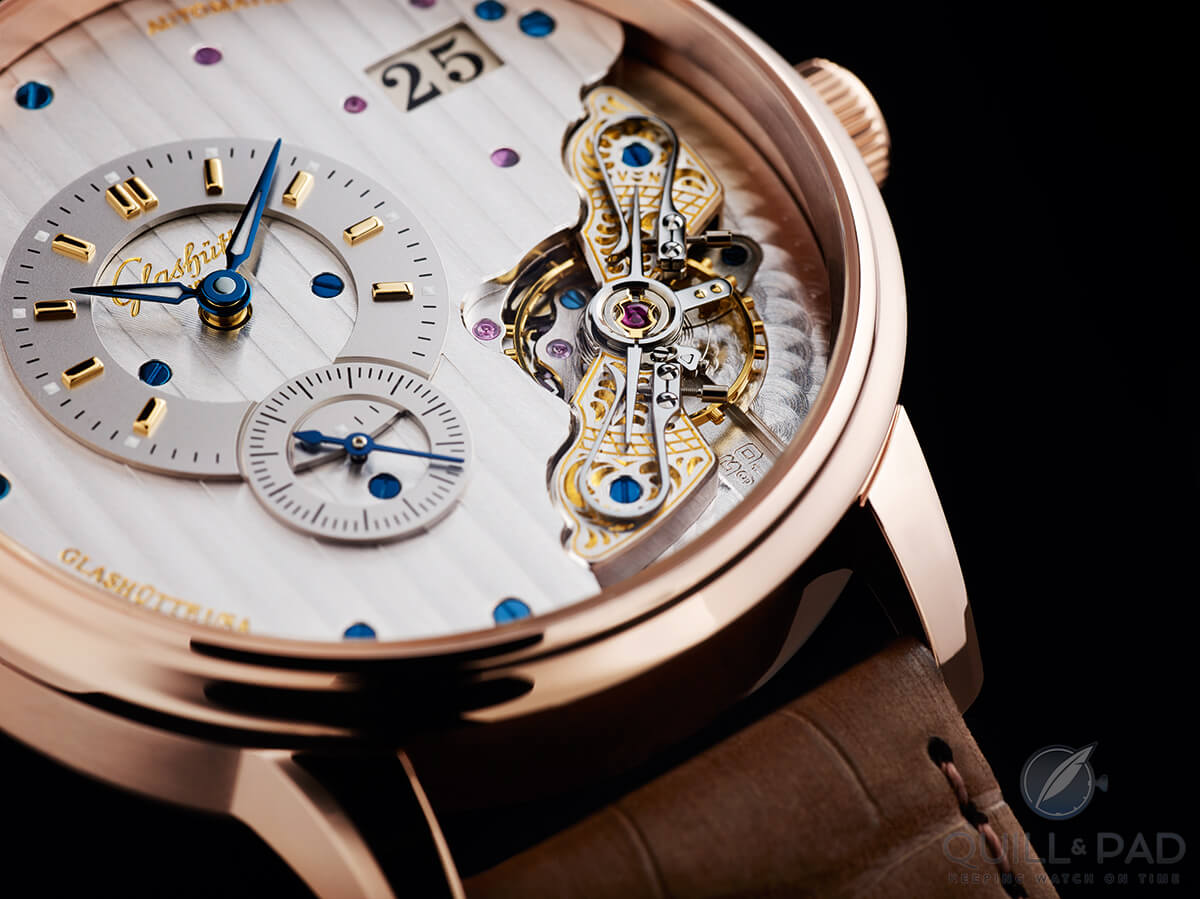
The beautifully engraved balance bridge and mirror-polished swan-neck regulator of the Glashütte Original PanoMaticInverse
The PanoMaticInverse by Glashütte Original is truly the movement lover’s watch, especially for someone who takes a dash of modesty with their exuberance. It is a splendor of restrained proportions, one that you can proudly wear to show some flash and sensibility.
The PanoMaticInverse also happens to be a fantastic example of that iconic German movement great: the ever-popular three-quarter plate. Oh no, there I go rhyming again. I’d better end this quick, otherwise you might think this is my only schtick.
Darn it, I can’t stop, it’s like I’m infected! Let’s just start the breakdown before you catch it, too.
Sigh…
• Wowza Factor * 9.6 It’s #CasebackThursday every day, just like I’ve wanted in a real bad way.
• Late Night Lust Appeal * 62.95 gn » 617.328m/s2 More than five times the force of a turn in a fighter jet, this watch will have you reeling, in that you can bet.
• M.G.R. * 55.54 Glashütte three-quarter plate and double swan-neck regulator, all flipped in the case for you to see better.
• Added-Functionitis * Mild It has a date, which many claim critical, and in this case it feels so very integral. I would recommend regular strength Gotta-HAVE-That cream, the horological swelling in this piece is supreme.
• Ouch Outline * 11.24 – Sharp Claws From A Cat All The Way Down Your Back Many will know this horrendous abuse from a feline that normally is a recluse. But to get a PanoMaticInverse on my arm, I would gladly let my own rear come to harm.
• Mermaid Moment * Not Having To Flip It To Take A Quick Snippit Like many I look at my case back a lot if only to remember the movement I’ve got. I do it so much that this saves me the time and for that, on the altar, I will gladly climb.
• Awesome Total * 646.1 If you take the first half of the caliber number, multiply with another, you get something plumper. That other is the thickness of the movement in millimeters, so 91 times 7.1 makes this one a keeper!
For more information, please visit www.glashuette-original.com.
For more stories included in our GERMAN WATCH WEEK, please read: How The Wall Came Tumbling Down: Made In Germany.
Quick Facts
Case: 42 x 12.3 mm, available in red gold and stainless steel
Movement: automatic Caliber 91-02
Functions: Hours, minutes, seconds; date
Price: €12,000 in stainless steel and €24,000 in red gold


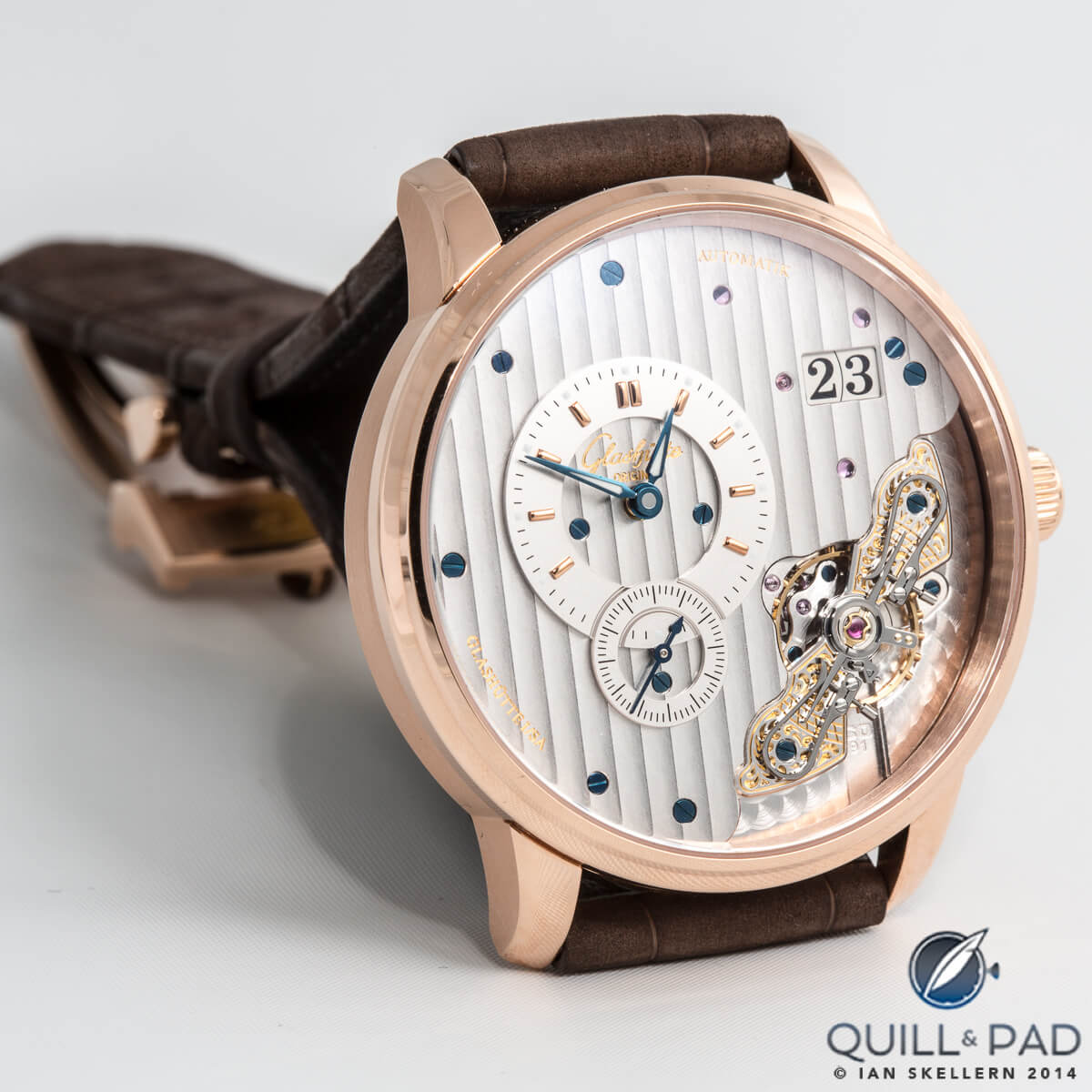
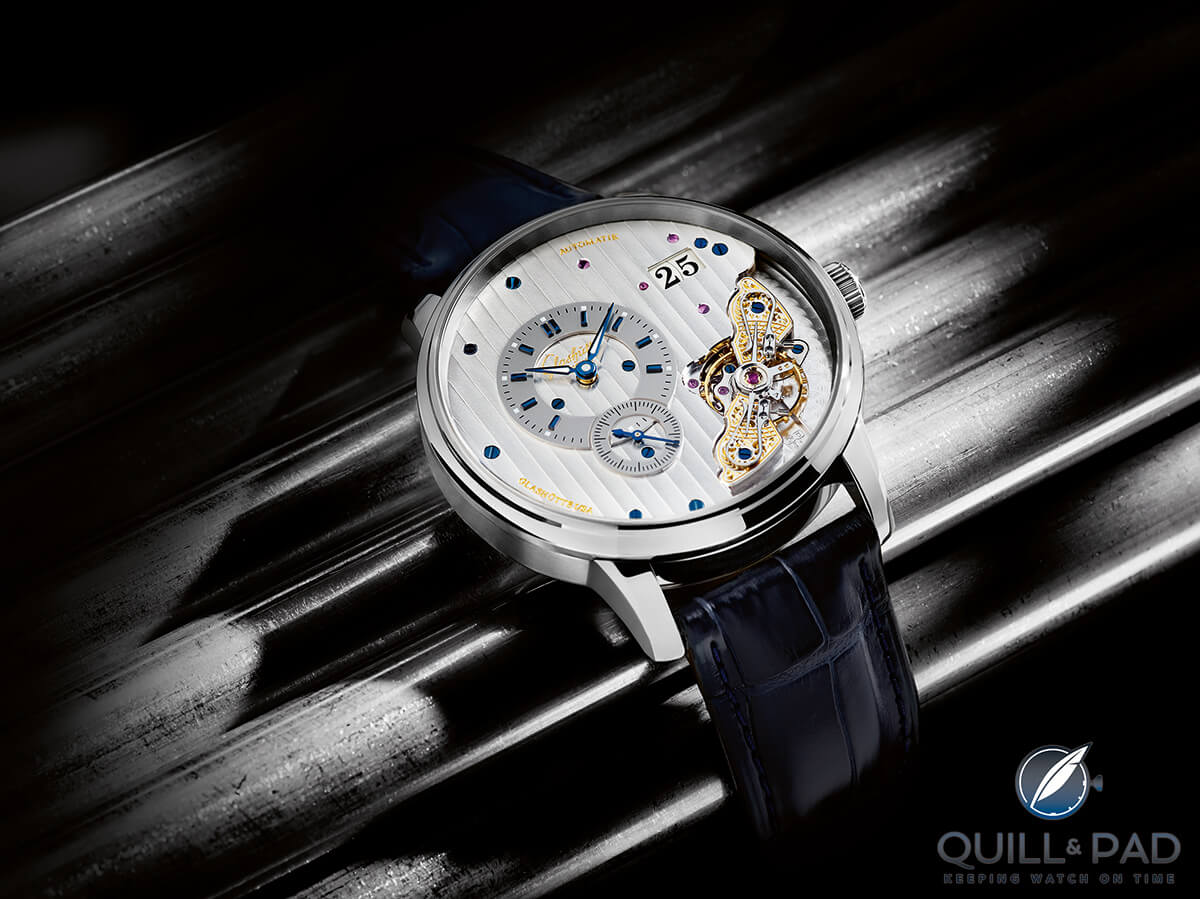
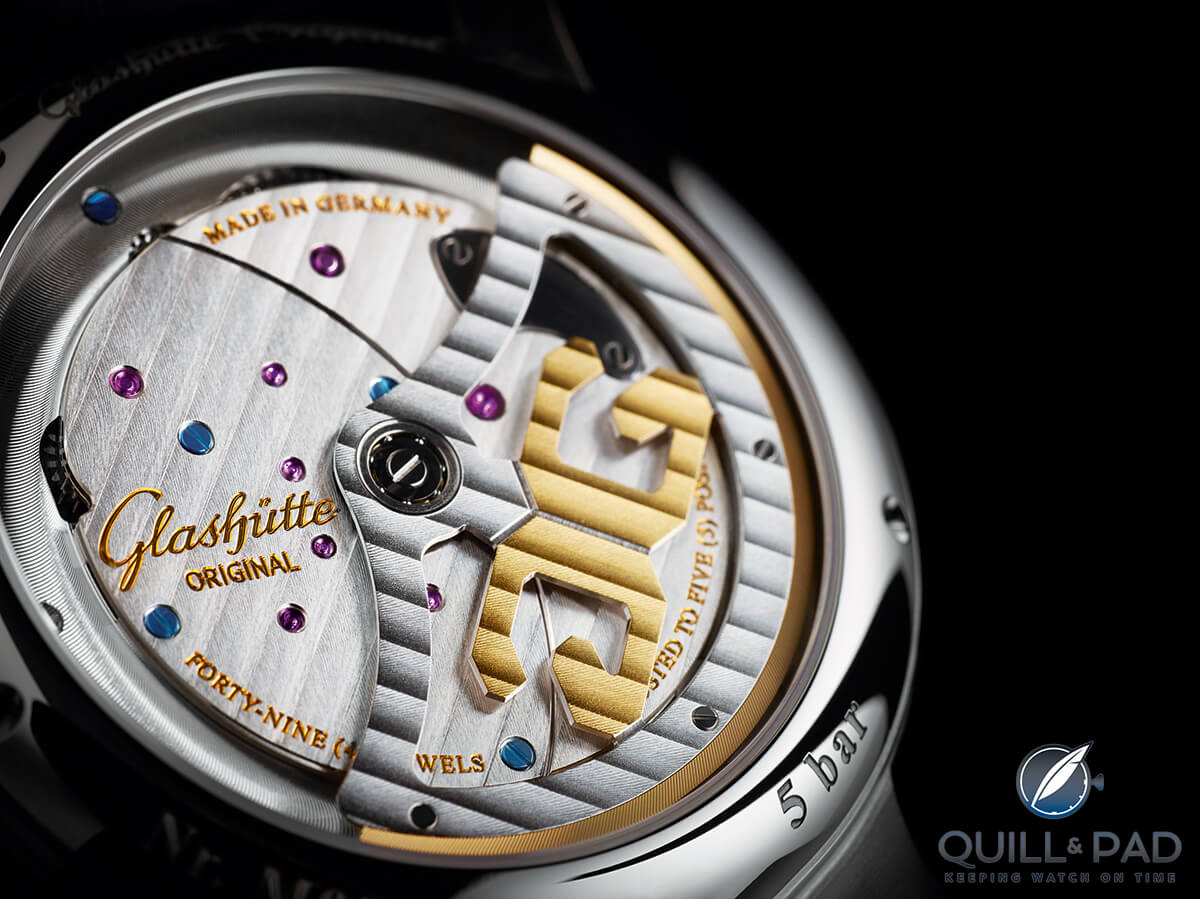
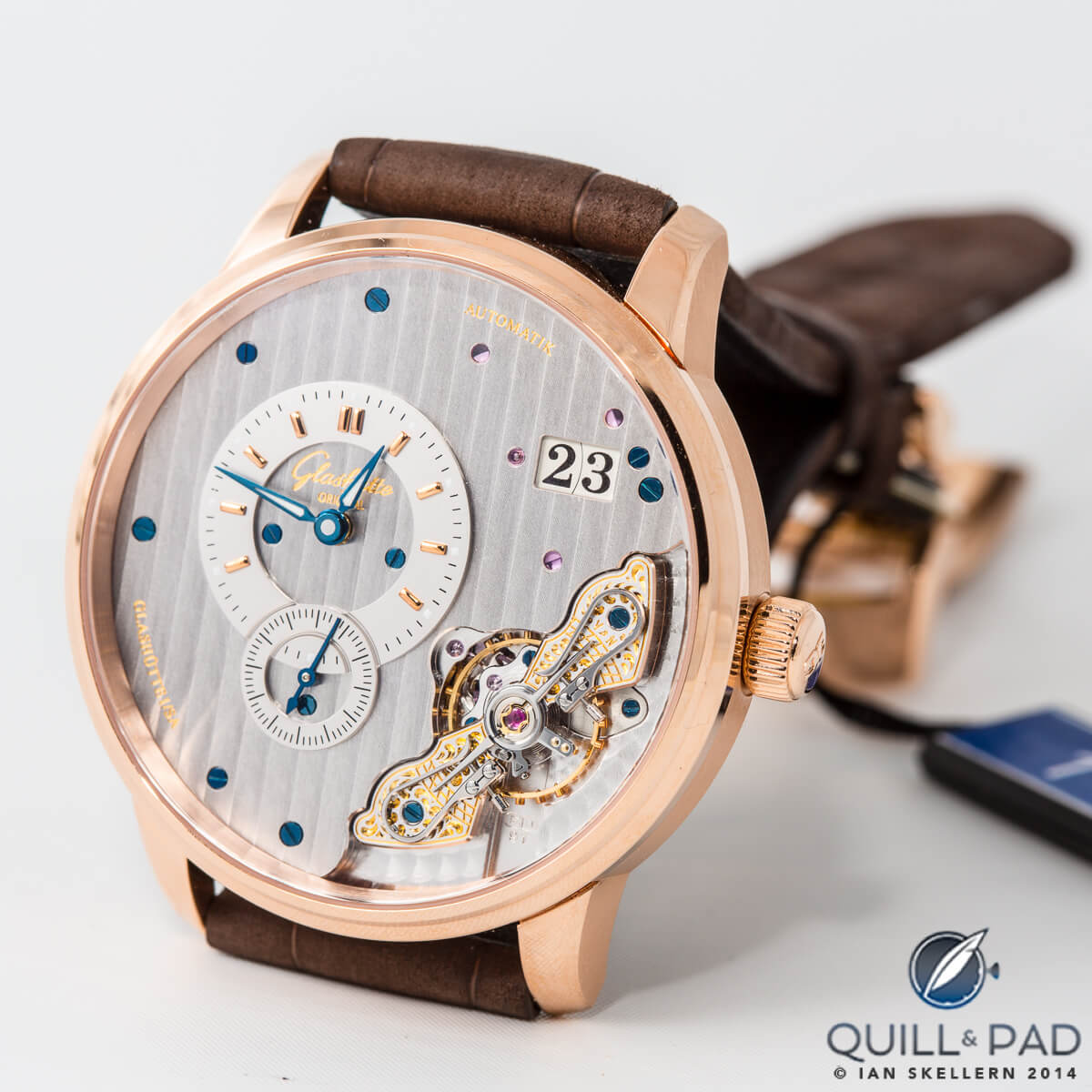
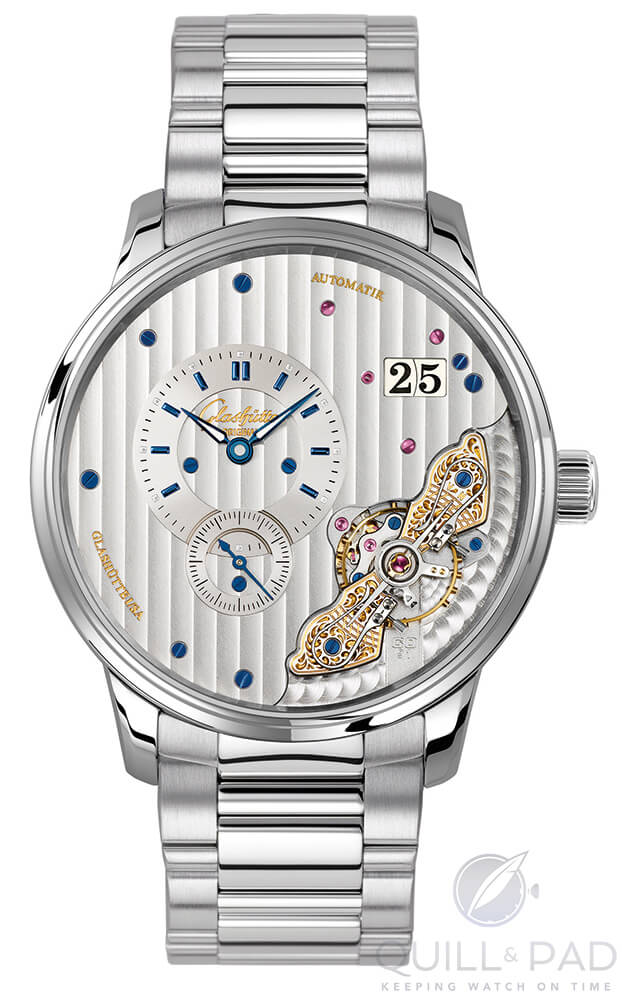
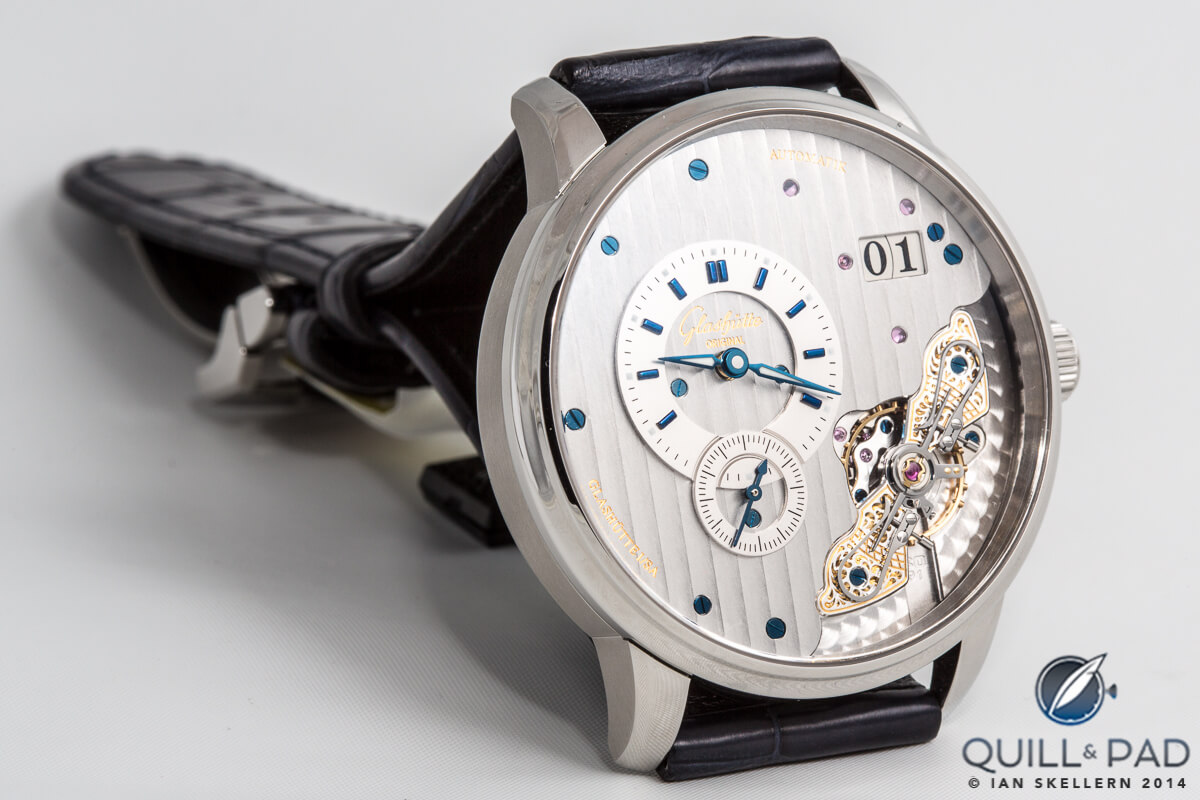
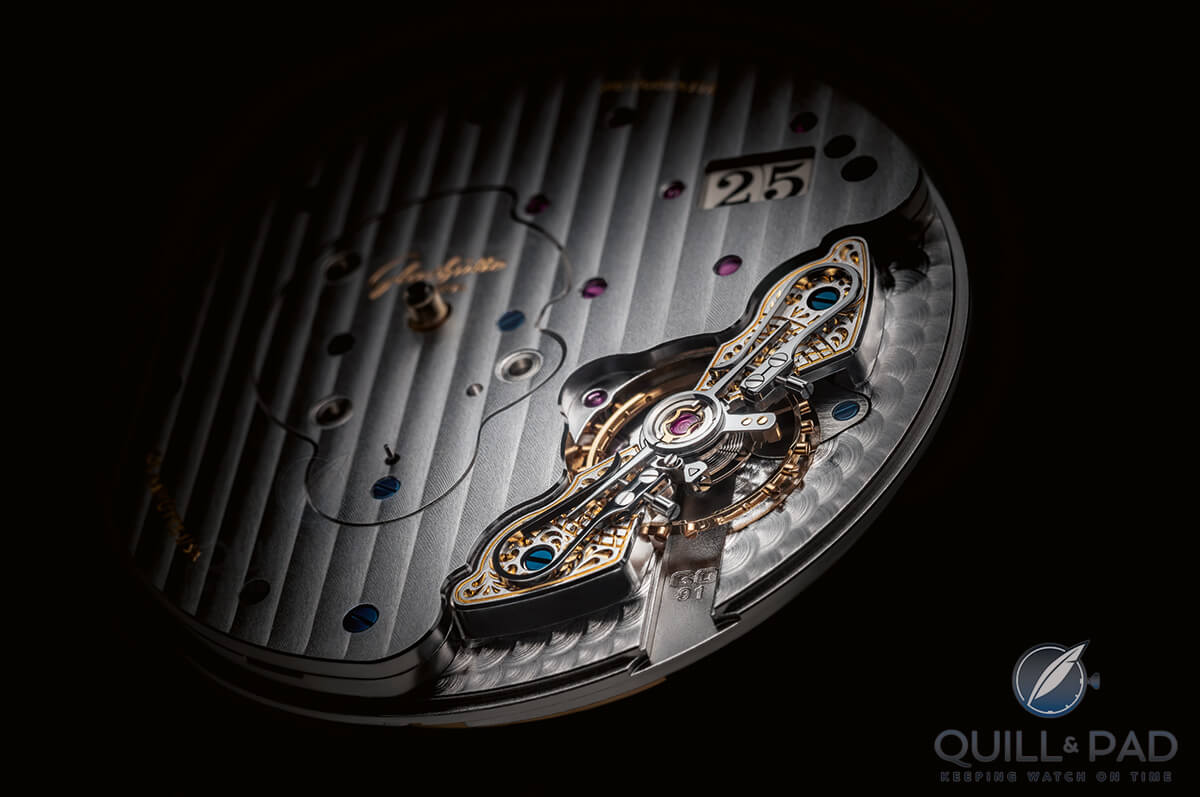
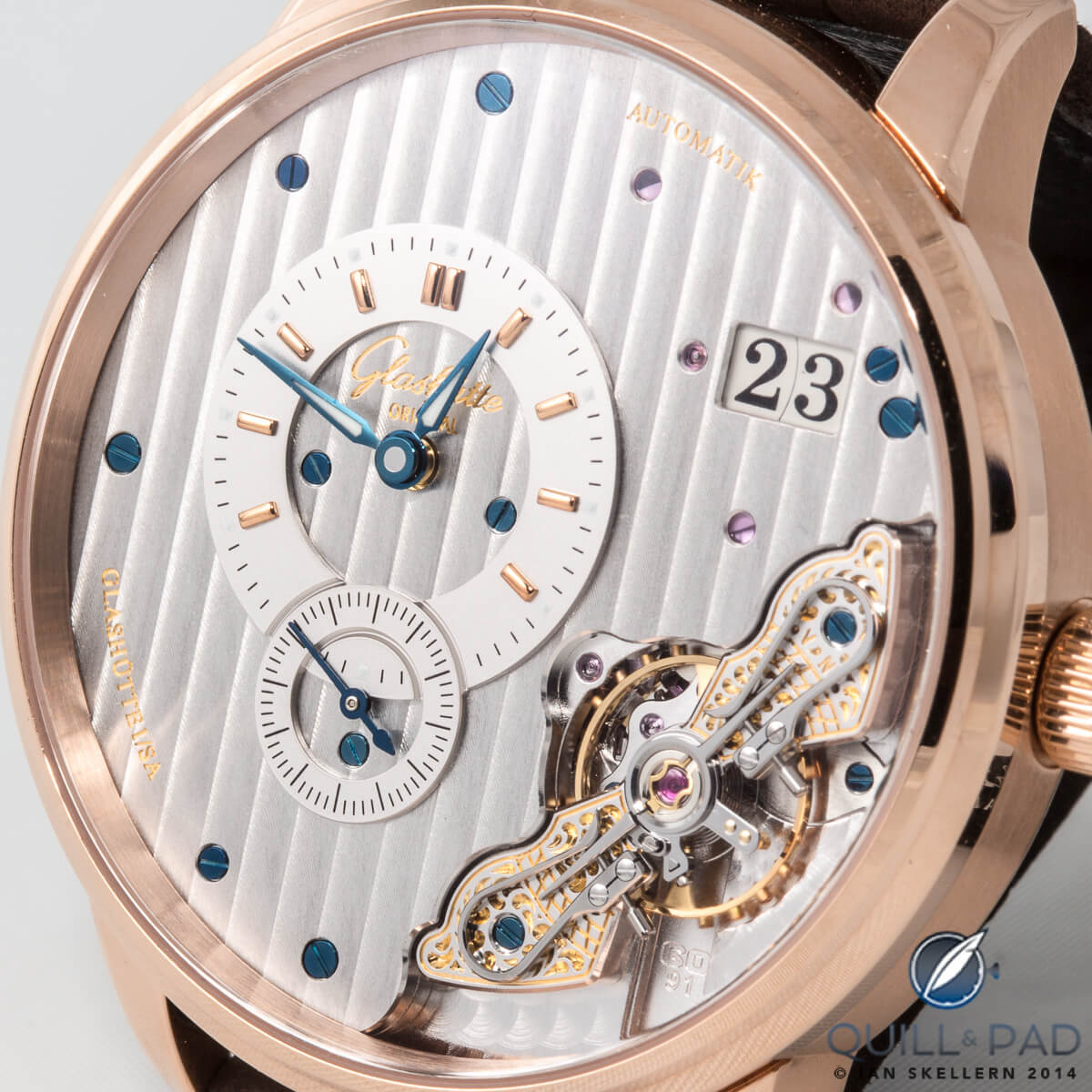
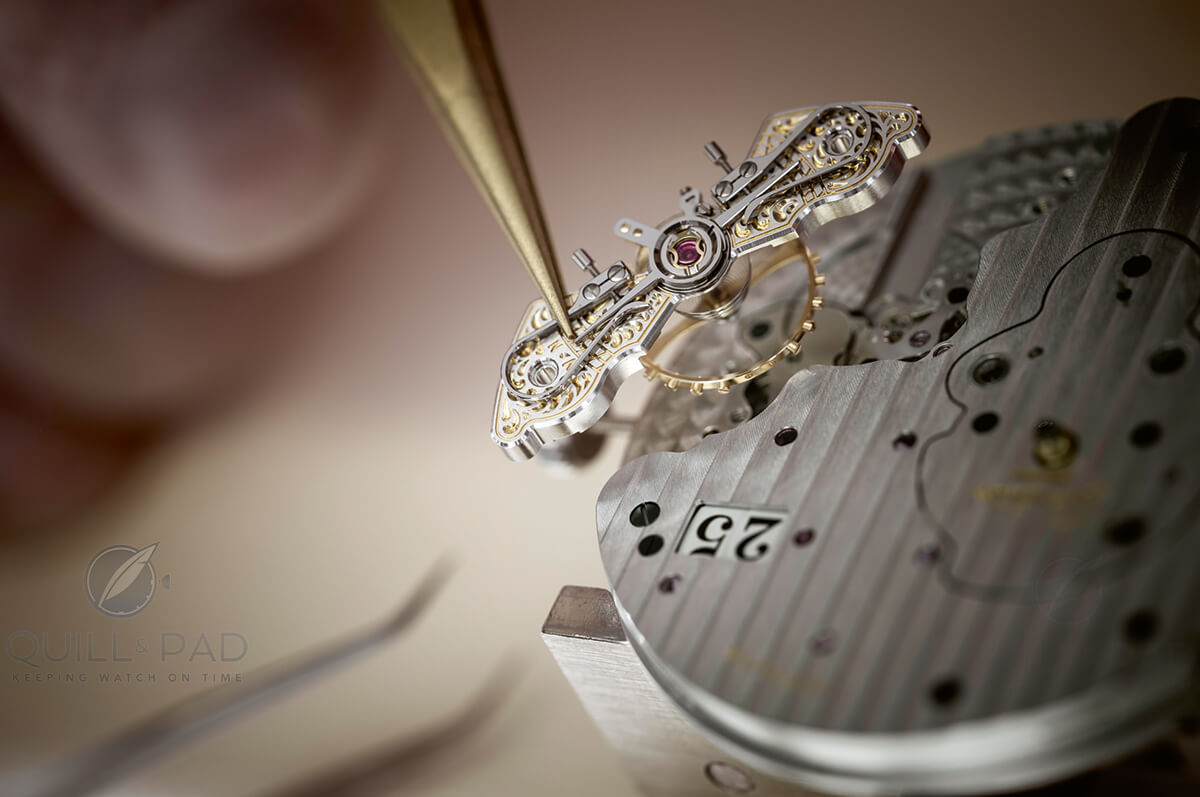
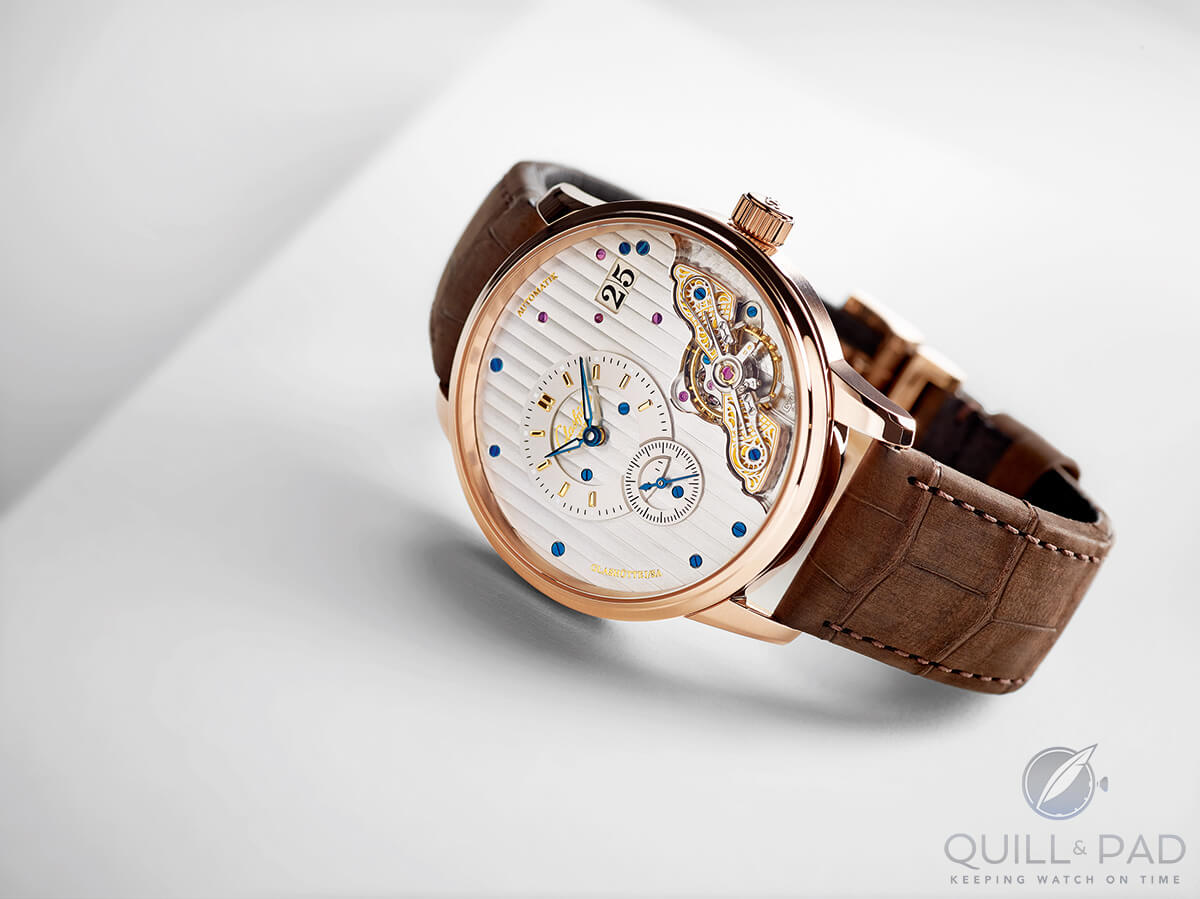
Trackbacks & Pingbacks
[…] […]
[…] Sautante 6. Meistersinger Singulator 7. Glashütte Original Senator Chronometer Regulator (See Ode To Three-Quarters: The Glashütte Original PanoMaticInverse.) 8. Antoine Martin Tourbillon Quantième Perpétuel 9. A. Lange & Söhne Richard Lange […]
[…] you don’t remember how I feel about the three-quarter plate style of movement, check out Ode To Three-Quarters: The Glashütte Original PanoMaticInverse. Overall, the watch was a delight to wear, but even more impressive to witness. I was very sad when […]
[…] To read the article that this poem prefaced, please click Ode To Three-Quarters: The Glashütte Original PanoMaticInverse. […]
[…] Ode To Three-Quarters: The Glashütte Original PanoMaticInverse by Joshua Munchow. […]
Leave a Reply
Want to join the discussion?Feel free to contribute!